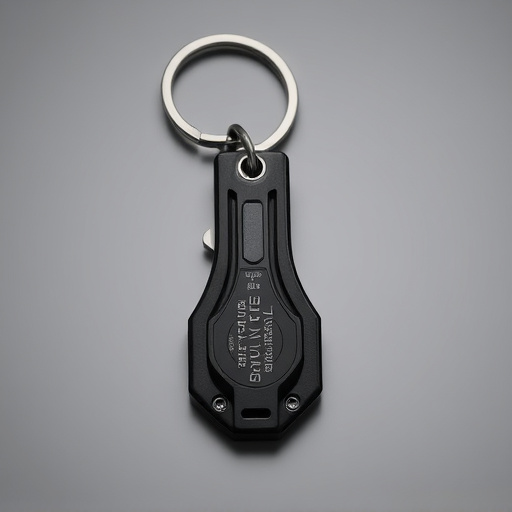Non-lethal keychain defense tools, growing in popularity as discreet personal safety solutions, offer temporary incapacitation without permanent harm. Prioritize ease of use and robust construction, considering multi-purpose options like pepper spray or noise makers. Comply with varying legal restrictions across jurisdictions regarding force usage for personal protection. Store and use these tools responsibly, keeping them secure, discrete, and understanding their limitations to achieve effective deterrence.
“Discover the power and potential of non-lethal keychain defense tools in this comprehensive guide. Explore the world of portable self-defense devices designed to offer safety without causing permanent harm. From understanding their unique capabilities to navigating legalities, we delve into key features ensuring effectiveness and user protection. Learn best practices for storage and usage, empowering you with knowledge on how to stay secure while adhering to responsibilities associated with carrying these innovative non-lethal keychain defense tools.”
- Understanding Non-Lethal Keychain Defense Tools
- Key Features of Safe and Effective Keychain Weapons
- Legal Considerations and Responsibilities for Carrying Self-Defense Keychains
- Best Practices for Storing and Using Portable Keychain Defense Devices
Understanding Non-Lethal Keychain Defense Tools
Non-lethal keychain defense tools have gained popularity as a practical and discreet self-defense option for individuals seeking to enhance their personal safety. These compact devices are designed to deter potential attackers and provide a sense of security while on the go. Unlike traditional weapons, non-lethal options focus on causing temporary disability or discomfort without causing permanent harm, making them ideal for situations where deadly force is not justified or desired.
Keychain defense tools often incorporate various safety features to ensure responsible use. Many models feature automated activation mechanisms that require a simple trigger pull or pressure sensor, allowing users to deploy the tool quickly in an emergency. Some advanced versions include LED flashlights for improved visibility and alarm systems to startle assailants. Additionally, their small size and weight make them easily portable, fitting comfortably on keychains, ensuring individuals can carry them without drawing unnecessary attention.
Key Features of Safe and Effective Keychain Weapons
When it comes to choosing a keychain weapon for personal safety, several key features ensure its effectiveness and safeness in unpredictable situations. Firstly, look for tools that are non-lethal, designed to incapacitate or deter aggressors temporarily without causing severe harm. These include devices like pepper spray keychains, Taser-like keychains, and noise makers that emit powerful sounds to startle attackers, allowing you to escape.
Additionally, the ease of use is critical. The best keychain weapons should be easily accessible and require minimal effort to deploy, ensuring you can react quickly in a dangerous encounter. Some models feature innovative designs with built-in self-defense strategies, such as multi-purpose tools that combine pepper spray, a knife, or a hook for escaping from grip. Always opt for products with robust construction, offering durability and reliability, so you can count on them when needed most.
Legal Considerations and Responsibilities for Carrying Self-Defense Keychains
When considering the legal implications of carrying non-lethal keychain defense tools, it’s essential to understand that regulations vary widely across jurisdictions. These small, portable weapons are often categorized under self-defense laws, which can differ in strictness and coverage. Some regions have specific rules regarding the type of force that can be used for personal protection, with many limiting the use of lethal force to situations where one’s life is immediately threatened. As such, it’s crucial to research and comply with local laws before carrying any self-defense keychain device.
Carrying a non-lethal keychain defense tool comes with responsibilities. Users must act reasonably and proportionately in their self-defense, avoiding excessive or unnecessary force. This means assessing the threat level accurately and only employing the tool when less lethal options are exhausted or inappropriate. Additionally, individuals should be aware of any restrictions on where and how such tools can be used, such as limitations in public places or during specific activities, to ensure compliance with both legal requirements and community standards.
Best Practices for Storing and Using Portable Keychain Defense Devices
When storing your portable keychain defense device, always keep it in a secure and secret location, preferably on your person at all times. Avoid leaving it unattended or easily accessible to others. Opt for a discreet carrying case or pouch to store the device, blending seamlessly with your everyday carry items. This ensures that only you have control over its use.
Using these non-lethal keychain defense tools responsibly involves understanding their limitations and intended purpose. Never brandish them in public unnecessarily, as this could provoke unnecessary alarm or conflict. Train yourself on safe handling practices, including proper activation techniques, to ensure effective deployment without causing excessive harm. Remember, the primary goal is deterrence and self-defense, not prolonged violence or injury.
Portable keychain weapons, while seemingly small in size, offer significant non-lethal defense options. By understanding their features, legal implications, and best practices for storage and usage, individuals can make informed decisions to enhance personal safety without compromising ethics. Armed with knowledge about these compact self-defense tools, responsible citizens can navigate potentially dangerous situations with added confidence and peace of mind, ensuring their well-being in a variety of settings.
